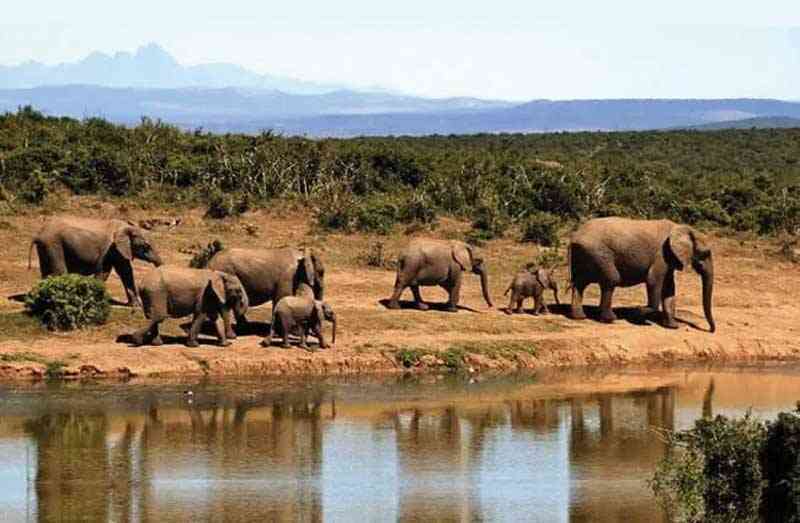
Running into elephants or a pack of hyenas on the way to school is not an unusual experience for children living near the Hwange National Park.
Still, it can be dangerous.
Wild animals killed 50 people and injured 85 more in the southern African country last year, and elephants are among the most dangerous.
In order to shorten the amount of time kids are exposed on the route to school, park authorities have come up with an unconventional solution: bicycles.
Joaquim Homela (12) is one of about 100 children who received a brand new two-wheeler that allows him to set off later, and avoid the pre-dawn hours when animals are most active.
Until recently, he used to hurry on foot, accompanied by his grandmother.
"Wild animals, particularly elephants as well as lions often roam around our villages," said the woman, Siphiwe Moyo. "So we worry for our young ones."
The bicycle project was concocted by the Zimbabwe National Parks and Wildlife Management Authority and the International Fund for Animal Welfare, a charity.
- Elephant census under way
- Blinkered loyalty to corrupt leaders is not patriotism
- Feature:Zim villagers bear brunt of elephant overpopulation
- Lions, jumbos on the loose
Keep Reading
They hope it will tame tensions between the park and nearby farming communities.
Deaths caused by wild animals in 2023 were down 26% on the previous year, but there are concerns the number might pick up again in 2024 as the tusked giants move further afield in search of water because of a drought exacerbated by the El Nino weather phenomenon.
"If left unattended, human-wildlife conflict poses a serious threat to the well-being of the communities and biodiversity integrity of the greater Hwange ecosystem," said Phillip Kuvawoga, IFAW landscape conservation director.
The group is also setting up "predator-proof" livestock enclosures in villages where farmers complain donkeys and cattle are regularly mauled by big cats.
Such initiatives help locals "appreciate the benefits of their wildlife heritage," said ZimParks director, Fulton Mangwanya.
"Because the moment they don't see value in wildlife, you can be certain that it will be decimated through poaching and the like," he said.
With an estimated 100,000 animals, Zimbabwe has the second biggest elephant population in the world after Botswana -- and it is growing.
Thanks to conservation efforts, Hwange is home to 65,000 of them, more than four times capacity, according to ZimParks.
Some can become aggressive, especially after interactions with farmers.
Following the example of Botswana, Zimbabwe has approved the creation of a fund to compensate victims of wildlife, but it is yet to become operational.
Meanwhile, hoping to see wild animals only from a safe distance, 12-year-old Homela now hops on his black and white bicycle shortly after dawn.
He cannot really sit on the saddle as the bike is still too big for him. But his determined pedalling on the uneven, winding gravel road that leads to the school betrays his excitement.
Along the way he passes some of his schoolmates walking. A few trot behind him.






